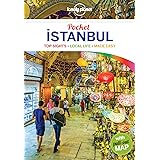by Erol Göka
Sep 11, 2014 | Newspaper Article, Culture
Scientific experimentation never leaves the researcher behind. The subjects that once came to his mind as a question, the areas that he focused on, are with him even in his dreams. Do not look at the fact that we keep writing about different subjects, especially about politics, our minds are always on the issues related to psychological health, scientific questions that we are looking for answers to.
Who knows, we have been researching the basic behavior patterns of people whose mother tongue is Turkish, and the motives that have guided their behavior throughout history, under the name of “Turkish group behavior” or “psychology of Turks” for years. This extensive research area has led us to put forward many theses and produce articles and books to date. Apart from the main books “Turkish Group Behavior” and “Psychology of Turks”, our books “Seven Heifers: Leadership and Fanaticism in Turks” and “The Nomadic Spirit of the Turk” were published. Our study, which examines kinship and male-female relations in Turks, has been on our table for a long time, waiting for us to look up from the busy agenda and take care of it.
Examining the psychological characteristics of a large ethnic community like the Turks requires great responsibilities as well as precautions. For example, it is necessary to determine the boundaries of the working areas very carefully, not to violate the borders, to work without falling into tribal traps and without even dusting their impartiality. In order to reveal the behavior patterns of a community throughout history, based on the knowledge revealed in the humanities up to now, the most primordial beliefs of that community, in writing or in words, with space, money and goods, weapons, genders, self, other cultures and We came to the conclusion that it is necessary to examine their relations with civilizations. In our work, we have tried to clarify these issues in relation to the Turks.
Based on the researches, we have shown that the influence of the old beliefs of the Turks is still strong in all areas. In addition to these, the potlaç culture, which is more important than money, was also very effective in the community psychology of the Turks, who have an oral culture and a deep-rooted nomadic past. Contrary to popular belief, the Turks appeared as a warrior community that did not show obvious male-dominated and racist features, had the characteristics of tolerance and permeability towards those who were not their own. We have written at length these results and their justifications in our work.
As Aydın, we have been separated from our field of scientific study due to our duties and the support we need to give to the struggle for a New Turkey. But our readings, classifications, and note-taking always continued. While listening to people and their families who applied for help due to our profession, we did not leave the horizon stemming from our own scientific passion.
I have used all these words in order to talk about a book that I have been very excited about lately, like a novel we love so much that we do not want it to end, that I read every page with care and awe. From the book of Sociologist Mustafa Aksoy’s giant work written in English-Turkish, “Silent Language of History, Stamps”… We had already known and appreciated this great scientist with his modest work, whose awareness was limited to a narrow circle, but now he has produced such a work that I think the academy And she will no longer be able to keep her silence against him.
Aksoy defines himself as a cultural sociologist. We are hesitant because of the vast definition of the concept of “culture” that has not yet been agreed upon. We think that it is more appropriate to consider all human sciences dating back to the past as a sub-branch of the science of history. For example, our work should be called “historical psychology” and Aksoy’s should be called “historical sociology”.
The book in our hands is gigantic in its dimensions. Aksoy seems to have had to choose these dimensions in order to include the English text, to include photographs of material cultural elements with stamps that provide evidence for his theses, and to include a detailed bibliography. But he did well, with these dimensions, the book also had a pleasant visual effect that doubled the reading pleasure. These gigantic dimensions are important in that the book symbolizes the difficulty of traveling every inch of the relevant geographies and carrying out fieldwork on site, which lasted for 18 years. We have a work in front of us that everyone who respects labor will stand for applause.
The stamps that are the subject of the study are not the stamps that the Turks left on the course of history, but maybe they are just as important. Tombstones, rock paintings, carpets-rugs, outer walls of houses, figures on horse harnesses, which are probably the first building blocks of the alphabet of a nomadic-animal society… Aksoy has tried to decipher the secret language of these shapes, which are one of the foundations of steppe Turkish culture. Let’s continue Sunday by informing the curious that they can get information about the book and Aksoy from www.mustafaaksoy.com.
http://www.erolgoka.net/tarihte-turkler-ve-damgalari/





















